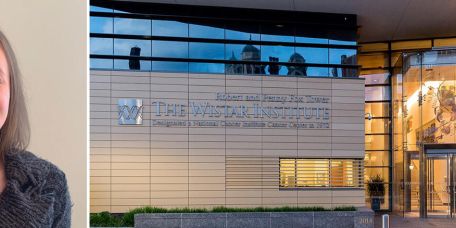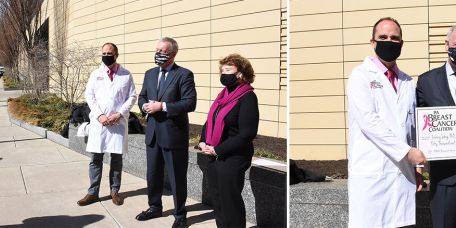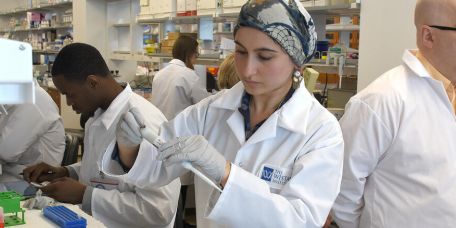The Wistar Institute
Low-dose Administration of MERS DNA Vaccine Candidate Induces Potent Immunity and Protects From Virus Challenge in Preclinical Models
PHILADELPHIA — (April 22, 2021) — A synthetic DNA vaccine candidate for Middle East respiratory syndrome coronavirus (MERS-CoV) developed at The Wistar Institute induced potent immune responses and afforded protective efficacy in non-human primate (…
Wistar Scientists Discover New Mechanism Through Which Senescent Cells Turn On Genes That Encode for Secreted Tumor-regulating Factors
PHILADELPHIA — (April 1, 2021) — Scientists at The Wistar Institute identified a new mechanism of transcriptional control of cellular senescence that drives the release of inflammatory molecules that influence tumor development through altering the…
Richard M. Horowitz Appointed Chair of The Wistar Institute’s Board of Trustees
PHILADELPHIA — (March 23, 2021) — The Wistar Institute, a global leader in biomedical research in cancer, immunology and infectious disease, is pleased to announce the appointment of Richard M. Horowitz as chair of its Board of Trustees. Horowitz, w…
Dr. Katelyn Miller Awarded American Cancer Society Fellowship
Katelyn Miller, Ph.D., postdoctoral fellow in the Wistar lab of Dr. Zach Schug, is the recipient of the prized Rena and Victor Damone Postdoctoral Fellowship in Cancer Research from the American Cancer Society (ACS). Awarded through the Extramural D…
RNA Editing Protein ADAR1 Protects Telomeres and Supports Proliferation in Cancer Cells
PHILADELPHIA — (March 12, 2021) — Scientists at The Wistar Institute identified a new function of ADAR1, a protein responsible for RNA editing, discovering that the ADAR1p110 isoform regulates genome stability at chromosome ends and is required for…
The First Basic Laboratory Cancer Center in the Nation
This year, the National Cancer Institute commemorates the 50th anniversary of the National Cancer Act, which changed the course of cancer research history in the U.S. In 1972, The Wistar Institute Cancer Center became the first Basic Labor…
Rugang Zhang, Ph.D., Named the Christopher M. Davis Professor
Receiving an endowed professorship is a defining moment in a scientist’s career. Dr. Rugang Zhang has been named the Christopher M. Davis Professor and was honored at a virtual event that gathered together the Davis family and friends, colleagues, a…
Support That Runs Deep: Pennsylvania Breast Cancer Coalition Funding to Wistar Has Been a Bridge to New Discoveries
For almost 20 years, the Pennsylvania Breast Cancer Coalition (PBCC) has supported top Wistar researchers embarking on their scientific careers. For them, it has meant the opportunity to pursue scientific theories — no matter how off-the-beaten-trac…
Cheyney Celebrated 184th Anniversary and Recognized Wistar With the Institutional Partnership Award
Cheyney University President Aaron Walton recognized Wistar during their Founder’s Day, presenting the Institute with the Institutional Partnership Award. In February, the Wistar-Cheyney University Collaboration kicked-off with the very first group…
Reigniting Workforce Development Amidst the Pandemic
Wistar’s accelerated BTT Program means students can move into apprenticeships sooner to gain full time jobs. The pandemic put the brakes on daily life, but didn’t stop scientific and educational progress at Wistar. With crucial fundin…









